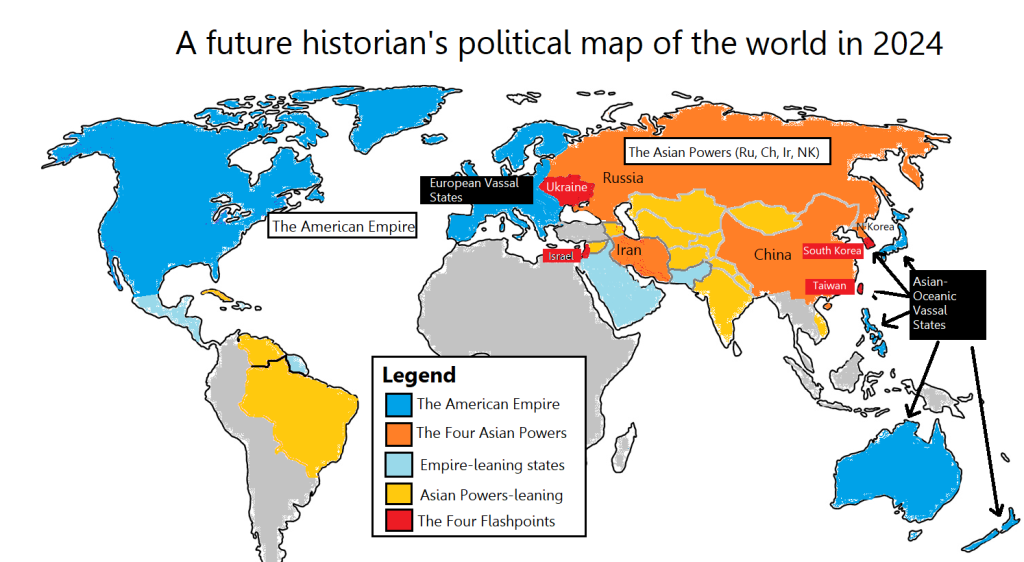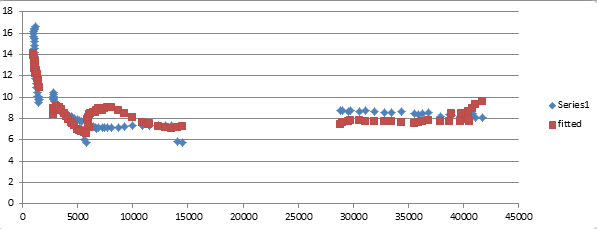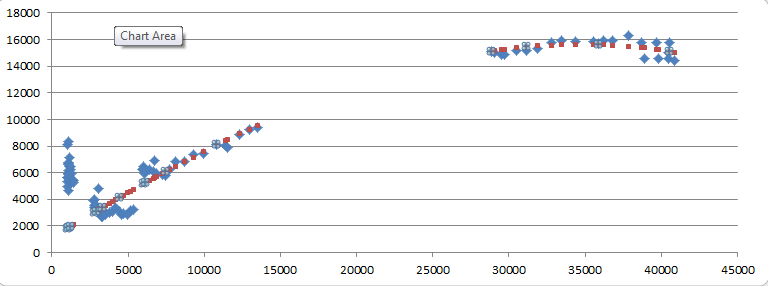Chapter 24.1 – With 20/20 hindsight, 2020 will be crystal clear
Sometimes it’s only possible to understand what is going on with the benefit of hindsight. Think of your own traumatic childhood – after all, we were all scarred horribly by our childhoods (at least, all the interesting people I know were). Yet at the moment when the worst events were happening, how aware were you of the full context? I remember the moment my family fell apart – I was eleven and my biggest concern was not the loss of my parental relationships, the long and ugly court battles that lay ahead, the loss of a nurturing home environment or the economic hardship that would follow the disorderly dissolution of family wealth. No, it was the loss of my pet turtle. Now, 38 years later, I can’t even recall that turtle’s name.
And what is true of family histories is as true of our greater political history: We turn on the news and are bombarded with images of … ehem … bombardments. The news item changes, and we are being told by some talking head or other that this US Presidential election is the one that really really matters – not the last one we were told really really mattered. But are these the ‘world-changing’ events really that big a deal? How will future historians see the things that raise eyebrows, like Russia invading Ukraine or Israel attacking UN peacekeepers in Lebanon? Will Julian Assange make the Table of Contents?
Chapter 24.2 – Citing foresight, for four poor sites?
Given what we know about the folly of making predictions when you’re caught in the storm of current events, only a fool would attempt to answers these questions. I always remember that wisest of sages, my father, telling me as a boy in the 1980s that I’d better hurry up and go visit the Amish, before they all disappeared. Decades later, while on a trip to Upstate New York, I asked a local if there were any Amish left and was nearly laughed back to New England. “The question is are there any non-Amish left. They have like ten kids each!”
Or else consider a sage even wiser than my father: Francis Fukuyama, with his ‘End of History’. He predicted that the 1990s had already seen the end of global conflict – that economic liberalism and democracy had won and solved the question of how to rule, and that everything that would follow would be a series of internationally organised peacekeeping missions to slowly spread the joys of Westernism to the far corners of the earth.
Chapter 24.3 – A fool and his predictions are soon parted
Of course, I am every bit the fool my father and Fukuyama are, so I will attempt to do the impossible: draw a political map of 2024, as it might appear in the textbook of a future historian of, say, 2034. This is what I believe it would look like:

The first thing to notice about this map is that the United States of America doesn’t appear on it. That is because, in my view, the constitutional republic of the US will be considered by future historians to have ceased to exist some time in the mid to late 20th Century, (when Deep State operatives assassinated President Kennedy). Instead, there exists the great empire of the time, drawn in blue – the American Empire, whose capital is not Washington DC but New York City. It occupies the territory of North America, but includes two blocks of vassal states: one in Europe and one in the Asia-Oceania Region. There are a number of aligned states, most notably the region of the middle east, which I believe historians would simply view as being ‘occupied by the American Empire’.
The other great power bloc is comprised of the Asian Powers (Russia, China, Iran and North Korea), supported by their network of sympathetic Asian states (Kazakhstan, India, Vietnam…). Most of the developing world is in grey, reflecting their weak ideological alignment and susceptibility to economic or even military suasion from either of the two blocs.
Chapter 24.4 – The four forlorn corners of Asian conflict
The future historians will conclude by identifying Four geopolitical flashpoints – areas where the American Empire’s political and economic boundaries and interests brush up against those of the Asian Powers: Ukraine, Israel, South Korea and Taiwan. Simply put, the Asian Powers cannot afford to allow these regions to remain under the sway of the Empire, and the conflicts that will bring the blocs into outright war hinge on these four geographic corners of Asia. As the Empire declines, the future of the world hinges on the fate of these four flashpoints: if Ukraine falls to Asia, the ripple effect on the European Vassal States will be so profound it will unwind a goodly portion of the Empire’s Atlantic power. If Israel falls, the Empire will lose its grip on the resource-rich Middle East. If South Korea falls, the Empires North Pacific flank will collapse, and if Taiwan falls, the South Pacific will soon follow.
So much for Chapter 24. A part of me is burning with curiosity to turn the page and read Chapter 25. But another part of me wants to turn back to Chapter 0 and watch an episode of Friends.


